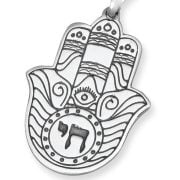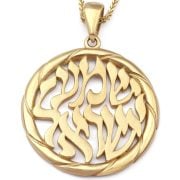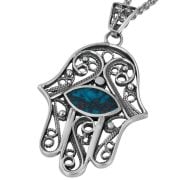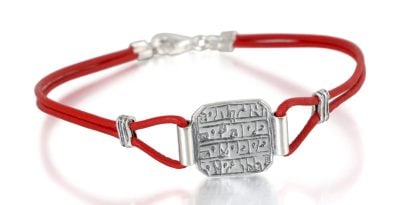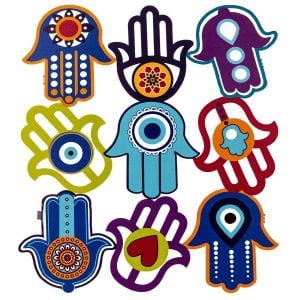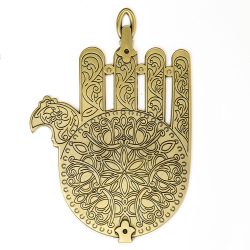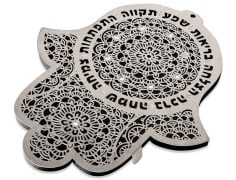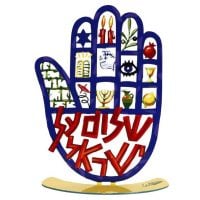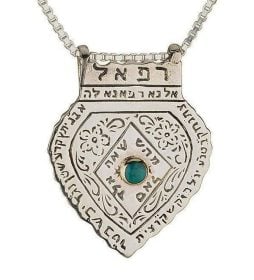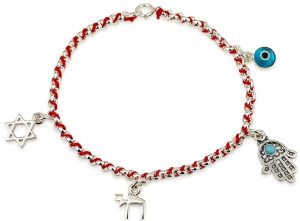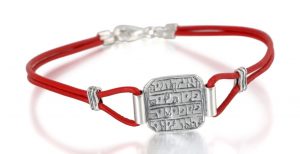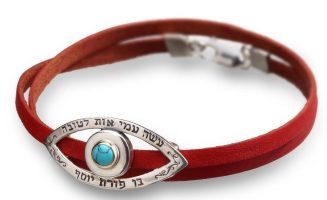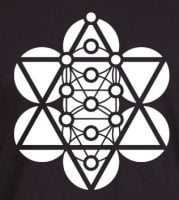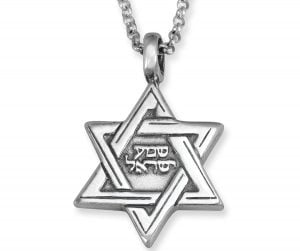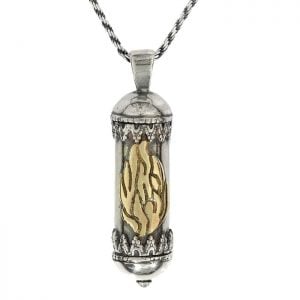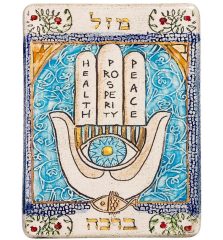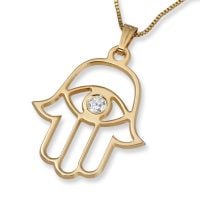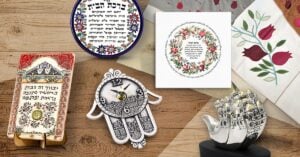There are many Jewish talismans, symbols, and amulets that are said to bring in good luck, or at least keep evil away. In Jewish tradition, we believe that every person has a yetzer tov (good inclination) and a yetzer hara (bad inclination), similar to the concept of good and bad luck. In Judaism and in mystical Kabbalah, there is the use of different symbols to keep the yetzer hara away, which in a way is similar to good luck charms.
Israeli jewelers and artists have taken this ancient tradition and created stunning pieces of jewelry and home décor featuring these talismans, which are commonly used in the Land of Israel and in Jewish communities around the world.
Although this is not an exhaustive list, here are the most popular good luck charms found in Judaism!
Hamsa
Keeping a Hamsa amulet in one’s home is a Middle Eastern and North African tradition that goes back centuries. The symbol is depicted as an open right hand, often with an eye in the center of the palm and sometimes adorned with fish or other symbols of protection and luck. The hand can either be pointing up or down, fingers spread or close together, and many believe even the smallest of details have an impact in the Hamsa‘s protection.
Hung in homes as an amulet till this day and worn as a talisman on necklaces and other jewelry, the Hamsa is a symbol of Divine protection and is Judaism’s most famous good-luck charm.
It’s believed to safeguard from negative energies and the Evil Eye, and to bring luck, happiness, success, fortune, and harmony.
In Judaism, some people also connect the Hamsa with the Exodus from Egypt, as it says that “God took Israel out of Egypt with a strong hand and an outstretched arm”. Some Jews also view the five fingers of the Hamsa as a reminder to serve God with all five senses.
The Hamsa is one of the most popular symbols used by Israeli artists on Jewish jewelry and home decor, beloved by Jews everywhere!
It’s also often combined with the traditional home blessing, for an additional protective motif.
Hamsa-adorned Jewish home decor is a traditional talisman for luck – and we’re loving these exceptional pieces from Israeli designers, perfect for Jewish homes everywhere!
Ana Bekoach
The prayer of Ana Bekoach is one of the most powerful and spiritual prayers in Judaism. It’s actually a poem with ancient roots, and it contains the mystical 42-letter name of God spread out along the seven lines, with only six words per line.
This meaningful prayer is said during hard times with the hope that God will help us in anyway he can. In Kabbalistic terms, it is a prayer that is to remind us that while we are physically bound to Earth, our spirits should be and can be uplifted to go above and beyond.
Ana Bekoach written on jewelry has mystical powers to it, said to keep the wearer safe while giving luck, guidance, and strength.
Red String
Though the exact history of the red string is unknown, what we do know is that the color red is supposed to keep the ayin hara or the “Evil Eye” away and is commonly associated with Kabbalah. Today many people wear red string bracelets, known in Hebrew as khutt hasheni, as an amulet for protection.
Since the traditional thin wool strings can easily tear or wear out, a more modern practice has come about of wearing red bracelets made of more solid materials such as leather, inspired by the original red strings and often also featuring metal pendants with kabalistic or other religious verses and motifs.
Evil Eye
Jewelry pieces and beads featuring an eye with a blue pupil and/or background are meant to ward off the Evil Eye, and are ironically also commonly called Evil Eye jewelry. The open eye put on jewelry or wall hangings is meant to keep the yetzer hara (bad inclination) away; the yetzer hara can only come when no one is looking, so the eye is constantly on the lookout.
Evil eye jewelry and art can be found throughout the Jewish world, often associated with Kabbalah.
The Evil Eye is also very commonly found on Hamsa jewelry and decor.
What is Kabbalah? Learn more about this fascinating Jewish mystical tradition, including its famous red string bracelets and other symbols and common jewelry motifs!
Shema Yisrael
Shema Yisrael is one of the most famous Jewish prayers, marks the Jewish connection with God. It is also one of peace and comfort, and has been used as a protective talisman by Jews since ancient times.
It’s traditionally put on Jewish jewelry and hung in homes in hopes of bringing protection, health, and success.
Learn more about the history and meaning of Shema Yisrael with our blog post here, and check out our top Shema Yisrael jewelry pieces from Israeli artists!
Mezuzah
The mezuzah is a symbol of God’s protection and blessing, and jewelry inspired by the mezuzah has also been worn since ancient times as an amulet for protection and Divine guidance. Today, mezuzah necklaces have also come to represent one’s relationship with God or Jewish pride and identity.
Some mezuzah necklaces additionally come with a protection-related blessing such as Shema Yisrael or the Priestly Blessing.

These Jewish good luck charms may not be the same as a four-leaf clover or a rabbit’s foot, but they come with a lot of uniquely Jewish meaning and history. All of these talisman, charms, amulets and so on, have been mentioned in ancient Judaism, and have all been used just as they are today – only now with more modern styles!
Jewish good-luck pieces and prayers are not just for those who believe in the power behind them, but they are iconic symbols of Judaism made for everyone who wants to show off a little bit of Jewish pride and meaning. And even if you don’t think you believe, you never know what might happen!
We’ve got the top hamsa jewelry pieces from Israel’s best studios so you too can wear Judaism’s most famous protective amulet and good luck charm!

